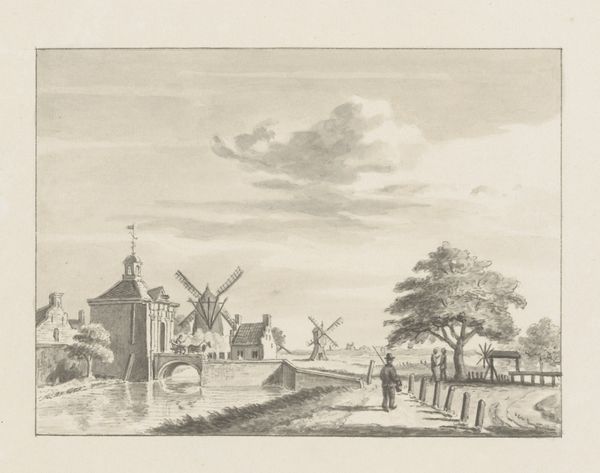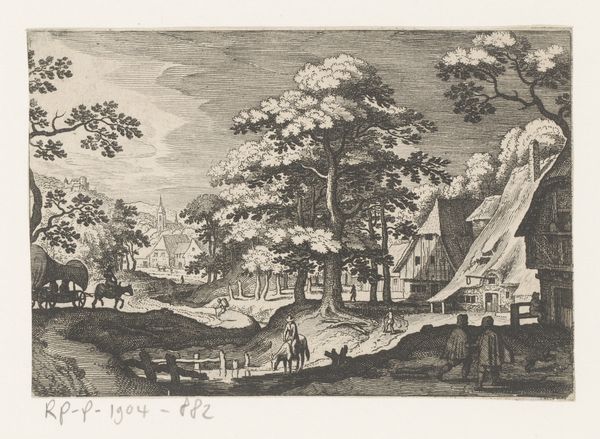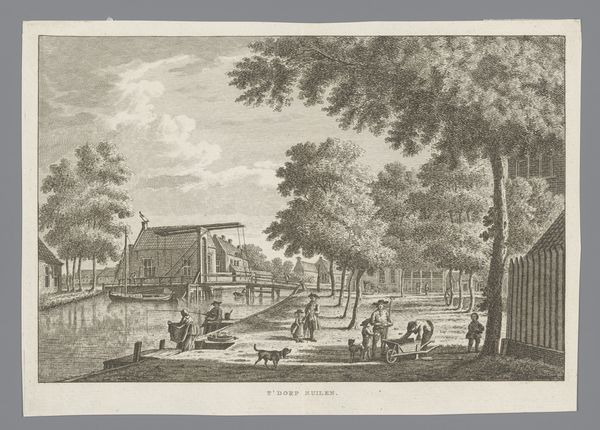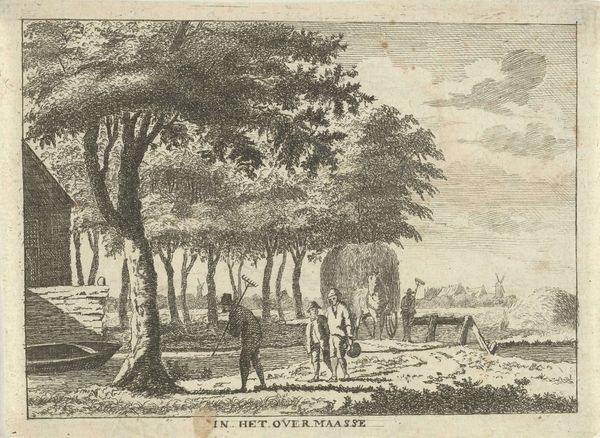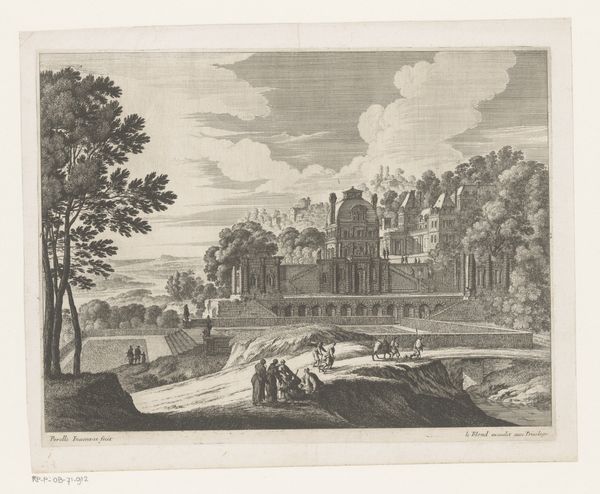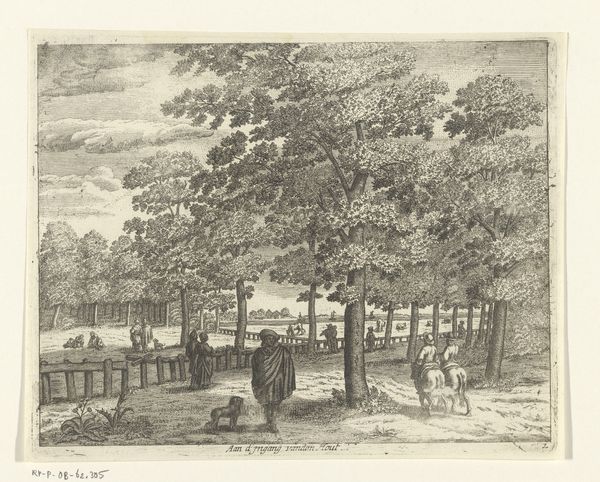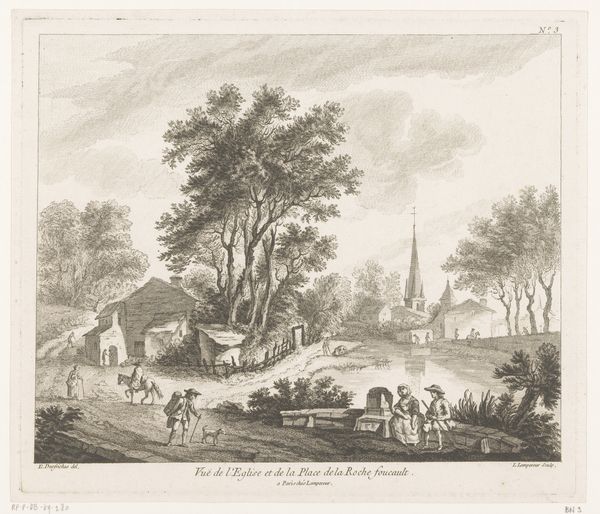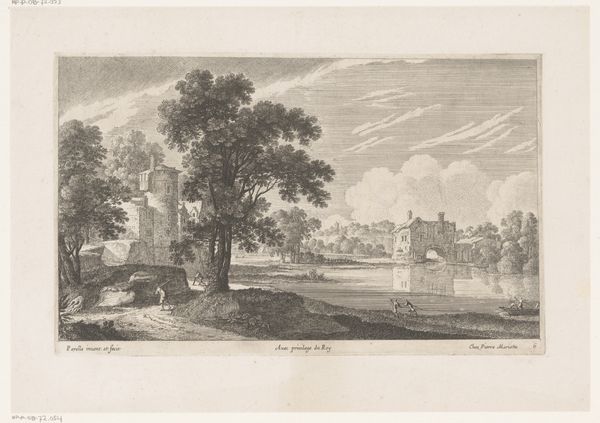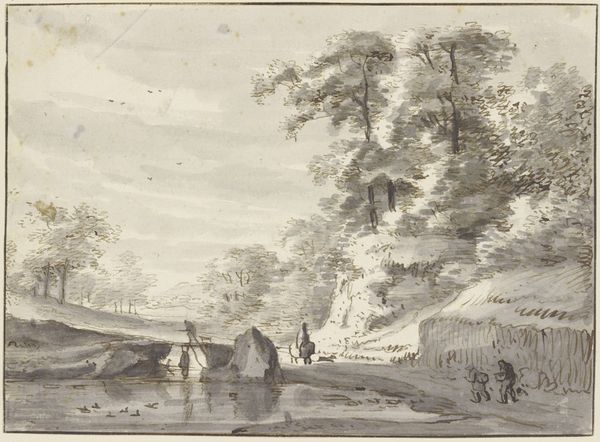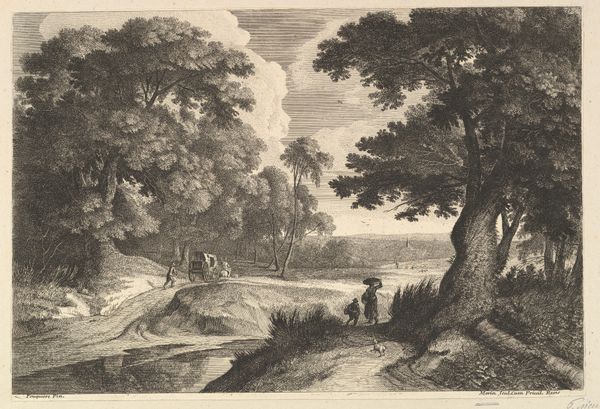
print, engraving
#
neoclacissism
# print
#
old engraving style
#
landscape
#
cityscape
#
engraving
#
realism
Dimensions: height 245 mm, width 360 mm
Copyright: Rijks Museum: Open Domain
Editor: This is “Gezicht te Waterloo,” an engraving dating from sometime between 1815 and 1830, created by an anonymous artist. It depicts a village scene, but something about its rigidity feels… almost staged? How do you interpret this work, particularly given its historical context? Curator: That’s a keen observation. This print offers a fascinating glimpse into the politics of imagery in the post-Napoleonic era. Consider the date – created in the immediate aftermath of the Battle of Waterloo. What purpose might an image like this serve in shaping public perception of that pivotal event and its location? Editor: Well, it seems to present a very calm, ordered scene. The church is prominent, people are going about their daily business… it almost downplays the trauma of a battlefield. Curator: Precisely. It presents a narrative of restoration and normalcy. Note the clear lines of perspective, the balance of elements, and the classical ideals inherent in the village depiction. Wouldn’t you agree these compositional elements project an image of stability, perhaps even a deliberate attempt to normalize and sanitize the landscape? Editor: That makes sense. It's like they’re trying to erase the memory of the battle and reinforce a sense of order and control, or at least publicly portray that. So this image really isn’t about historical accuracy, but more about creating a specific message, or maintaining political authority. Curator: Indeed. By understanding how institutions use images like these to cultivate desired perceptions, we see how powerful art is. It makes you wonder: who commissioned this, and what was their exact purpose in doing so? Editor: It is so intriguing to see how much political intention can be embedded within seemingly straightforward depictions of landscape.
Comments
No comments
Be the first to comment and join the conversation on the ultimate creative platform.
